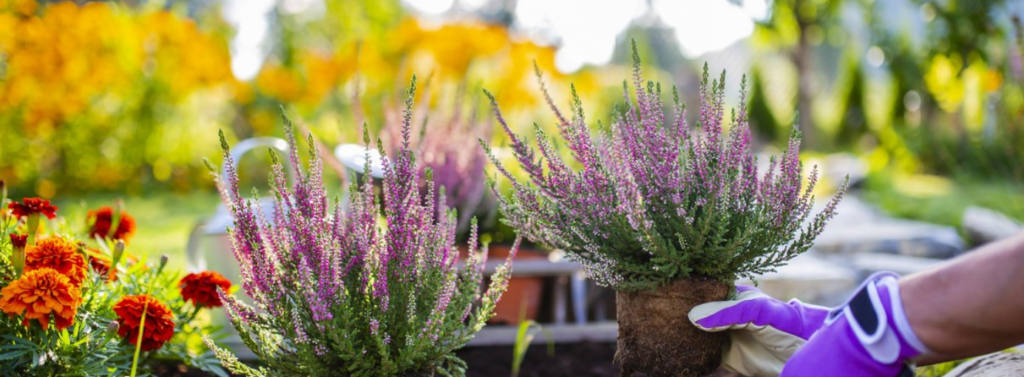
 Common heather (Calluna vulgaris)is a small shrub from the heather family with narrow, scaly, tetrahedral leaves. Heather grows from 25 cm to a meter in height. Numerous varieties of heather differ greatly in leaf color. Heather leaves come in all shades of green, as well as silver, yellow, bronze, orange, red and brown. Many small goblet-shaped heather flowers are collected in racemose inflorescences that end each branch. Heather blooms with white, pink, lilac, crimson or cherry flowers.
Common heather (Calluna vulgaris)is a small shrub from the heather family with narrow, scaly, tetrahedral leaves. Heather grows from 25 cm to a meter in height. Numerous varieties of heather differ greatly in leaf color. Heather leaves come in all shades of green, as well as silver, yellow, bronze, orange, red and brown. Many small goblet-shaped heather flowers are collected in racemose inflorescences that end each branch. Heather blooms with white, pink, lilac, crimson or cherry flowers.
loose, moist, well-drained soils with an acidity level of pH 3.5 – 5.0. Does not like calcareous soils.
It is necessary to monitor soil moisture – the top layer of soil should always be moist. On hot days, additional spraying.
optimal temperature range from +8 to +25°C.
July August.
Heather can be planted in spring and autumn, but spring is preferable.
dividing the bush, cuttings and seeds.
In order for the planted heather to please the eye for as long as possible, it should be properly cared for.

More than seventy species of hydrangeas are known. In natural conditions, hydrangea flowers are shrubs up to 3 m tall, medium-sized trees and vines that can climb tree trunks to a height of up to 30 m. Hydrangea is a capricious flower that requires special treatment.
Loose, moist, nutrient-rich soil (pH 5.0)
Weekly and abundant, water consumption is from 15 to 20 liters per plant.
Optimum temperature range from +8 to +25°C.
From early summer to late autumn.
In the fall, sow seeds for seedlings, followed by planting the seedlings in open ground in early spring two years later. In the south, seedlings can be planted in the ground in the fall.
By seeds, dividing the bush, grafting, layering and green cuttings.
Correct and timely pruning of the plant will speed up the formation of buds and fresh shoots. Trim the flower (tree hydrangea, for sure) in early spring to stimulate its growth. It is due to the competent pruning procedure that the bush becomes overgrown with those very lush caps of inflorescences. Every year from 3-4 years.

In nature, these shrubs grow in mountain forests, on slopes in the subalpine and alpine mountain belts, and even in the tundra. These are evergreen or deciduous shrubs, from 0.3 to 3 m tall. The mountains are always humid and there is a lot of rainfall, both in summer and winter. The soil is poor, loose and, as a rule, acidic, since organic residues do not completely rot. Rhododendron’s favorite environment is pine. This tree creates that favorable microclimate and the soil that rhododendron needs: acidic, light, saturated with air. These are the conditions that this plant needs to create.
Loose, acidic soils (pH 4.5-5.5). If the soil on the site is sandy or loamy, then peat must be added to deoxidize and improve the structure.
The optimal summer watering rate is once every 5-7 days in the amount of 10-15 liters of water per adult plant. At the end of summer and early autumn, watering is reduced to once every 10-12 days.
Immediately after flowering: young plants – annually, adults – once every year or two.
In spring and summer – 16-18 ºC, from October the temperature is lowered to 5-8 ºC for a month and a half, and when the buds begin to swell, the temperature is gradually increased to 18 ºC.
Seeds, cuttings and grafting.
After the transplant. You can pinch the plant several times; the last pinch is carried out in mid-summer.